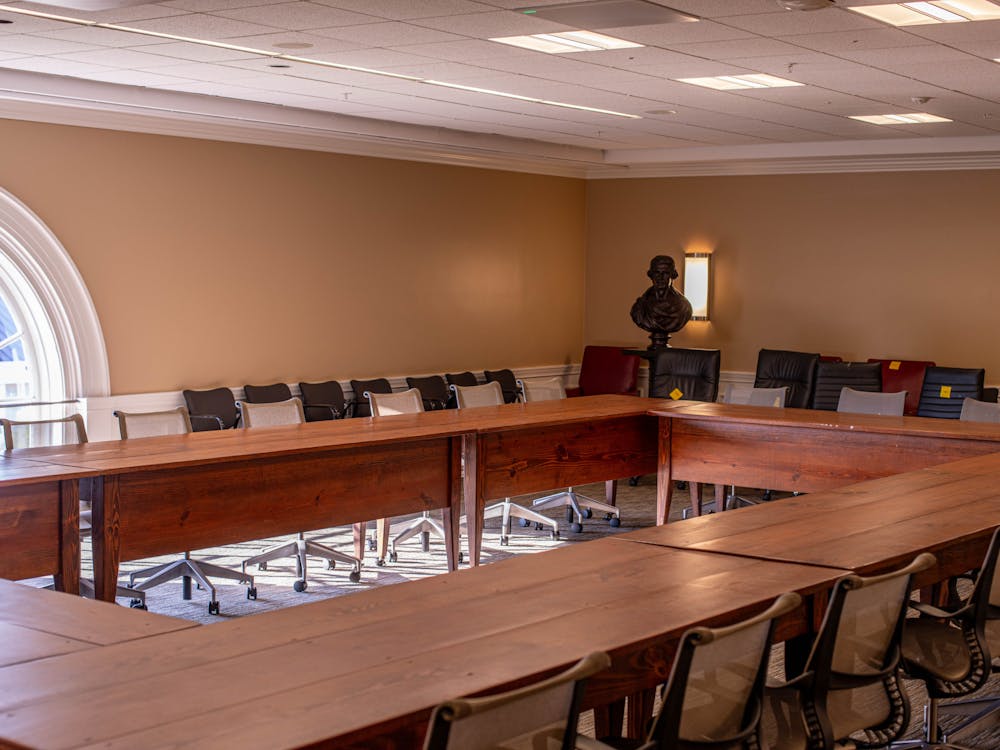The evolving, younger face of the nation is expected to produce changes in the field of medical school admissions, according to a recent survey by Kaplan Test Prep and Admissions. The study’s results, which were released yesterday, show that almost half of medical schools surveyed across the country are considering increasing the number of seats in their entering class. The study also showed that factors such as the MCAT and monitoring of social networking profiles may be gaining increasing prominence in the admissions process.
Amjed Mustafa, Kaplan director of pre-health programs, noted that this year’s survey, which is the latest of Kaplan’s yearly medical school admissions surveys, was based off interviews with 85 admissions officers at U.S. medical schools.
“We do these surveys typically to increase awareness and to hit on the major hot topics and issues that are going on in the field of medicine,” Mustafa said, noting that the surveys also allow Kaplan to investigate trends in the world of admissions.
The survey results were particularly interesting, Mustafa noted, because of the insight they provide into the current concerns of admissions officers. In this respect, Mustafa said, part of the survey’s focus was on admissions officers’ reactions to an expected future shortage in physicians.
This shortage, Mustafa said, is attributed to the nation’s aging population. He explained that a third of today’s physicians are older than age 55, meaning that in 10 years their retirement will combine with the aging of the overall population and simultaneously create a greater demand for healthcare as well as a smaller number of practicing physicians.
Mustafa noted that this predicted shortage of physicians has caused many medical schools to consider increasing the number of available seats for prospective students.
In particular, he noted that 44 percent of admissions officers surveyed said they were planning to increase the size of their entering classes. Those who were not planning to do so, Mustafa said, were limited by considerations such as the need for more professors, resources and classroom space.
University Physician R.J. Canterbury, who also serves as associate Medical School admissions dean, agreed, noting that his office is planning to increase the number of students accepted into the Medical School in the coming years. He said this increase will require more resources in key areas.
Canterbury noted that the emphasis in medical education is shifting away from lectures and clinical work and moving toward a clinical focus. Because of this, Canterbury said, expansion efforts will have to focus on recruiting more faculty for small group interactions, hiring more “actors” to play the role of “standardized patients” with specific diseases and having more training sites for students to learn from current patients.
Ultimately, much of this expansion and change in educational focus at the University’s medical school is expected to be accomplished by the construction of a new medical education building that is expected to be completed by spring 2010, Canterbury said. This means that the class entering in fall 2010 will increase from the current total of 142 students to 148, with an expected 160 students per class in the following years, Canterbury said. “The entire state is interested in having an increased number of medical students across the commonwealth.”
Another aspect of the Kaplan survey, Mustafa noted, revealed a changing emphasis in medical school admissions, particularly in the importance placed on the Medical College Admissions Test.
According to the survey’s results, 44 percent of admissions officers reported that the MCAT was the single most important factor in admitting applicants. This was a significant increase from the 34 percent who reported this the previous year, Mustafa noted, and was in many cases a result of a 15-year study by the Association of American Medical Colleges that was published last year.
This survey, Mustafa said, showed a 0.7 rate of correlation between performance on the MCAT and performance in both medical school and the United States Medical Licensing Exam.
“Medical schools realized, ‘If I have one score, and if that score’s already telling me a lot about the applicant, [or] at least the quantitative aspect, then [I’m] going to use that score,’” Mustafa said, adding that this consideration allows admissions offices to save resources. He noted, however, that other factors are still very important in medical school admissions.
Canterbury emphasized this, noting that although the MCAT “predicts performance in medical school and [on] the licensing exam,” it does not necessarily receive the single greatest focus in the University’s admissions office.
“We sometimes have applicants with perfect MCAT scores who we don’t interview because other aspects of their application are deficient,” Canterbury said, adding that grade point average, healthcare experience, altruistic activities, letters of recommendation and personal statements still play large roles in the process.
The potential monitoring of social networking sites may also require potential applicants “to be very careful about how they’re presenting themselves,” Mustafa added, especially because some Web sites make it possible to view information that was removed from individual profiles. He noted, though, that the percentage of medical school admissions officers who had visited such profiles according to the Kaplan report was only 14.
Canterbury said the University’s medical school admissions office does not have a policy of looking through social networking sites “unless there’s a reason,” noting that applicants sometimes have brought up the subject both in interviews and in applications.
“That’s certainly made admissions officers look, but we don’t go actively searching for it,” Canterbury said.






